watch now!
A place where I discuss all things related to toddlers and motherhood!
Subscribe to my Youtube channel
As a clinical psychologist, published author, and mother to two cheeky young children, I get it. I’ve spent YEARS researching and filtering through the noise online, so you don’t have to.
PARENTING TIPS
POTTY TRAINING
ANTIRACISM
PLAY
Blog Topics
SIBLING RIVALRY
SCREEN TIME
TANTRUMS
DISCIPLINE
Hi I'm Dr. Jazmine
My Baby/Toddler Won’t Stop Throwing Food! – Ways to Prevent and Handle It
topics:
Food throwing – it’s like the ultimate test of your patience. Can you keep your cool? And when your toddler or baby throws food, it can be annoying and frustrating. But throwing food is developmentally appropriate, especially for between 6 and 18 months.
I know you’re like, “Great, Dr. Jazmine. That’s fine and all. But how do I get it to STOP?”
If you think about it, food is a complete sensory experience – from the textures to the smells to the taste. It’s all so interesting, new, and captivating for your child.
I’m not saying you have to encourage them to explore this and have a texture experience while they’re eating. But I want you to know that food is interesting and captivating for your little one. So often, throwing food is out of play and curiosity.
Before I get to the step-by-step guide on what to do in the actual moment your toddler or baby throws their food, I want to share 10 simple strategies you can start to hopefully prevent food throwing.
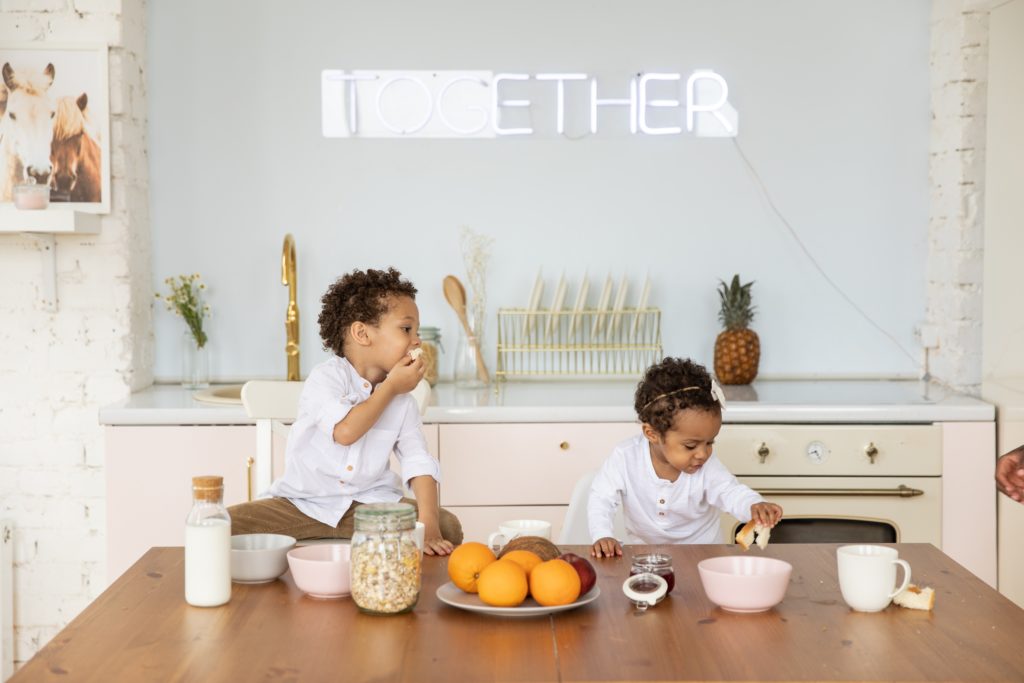
10 Prevention Strategies for Food Throwing
1. Be mindful of your developmental expectations of your child.
Keep their developmental age, their temperament, and their personality in mind because that’s going to help you.
Remember, they are still little and everything is new to them will help you have more patience with your child and a bit more understanding of why they’re engaging in throwing food.
2. Model the behavior you want your child to do when eating.
You’re going to want to get intentional about showing them how to eat, and encouraging and drawing a lot of attention to the behavior that you want to see through praise.
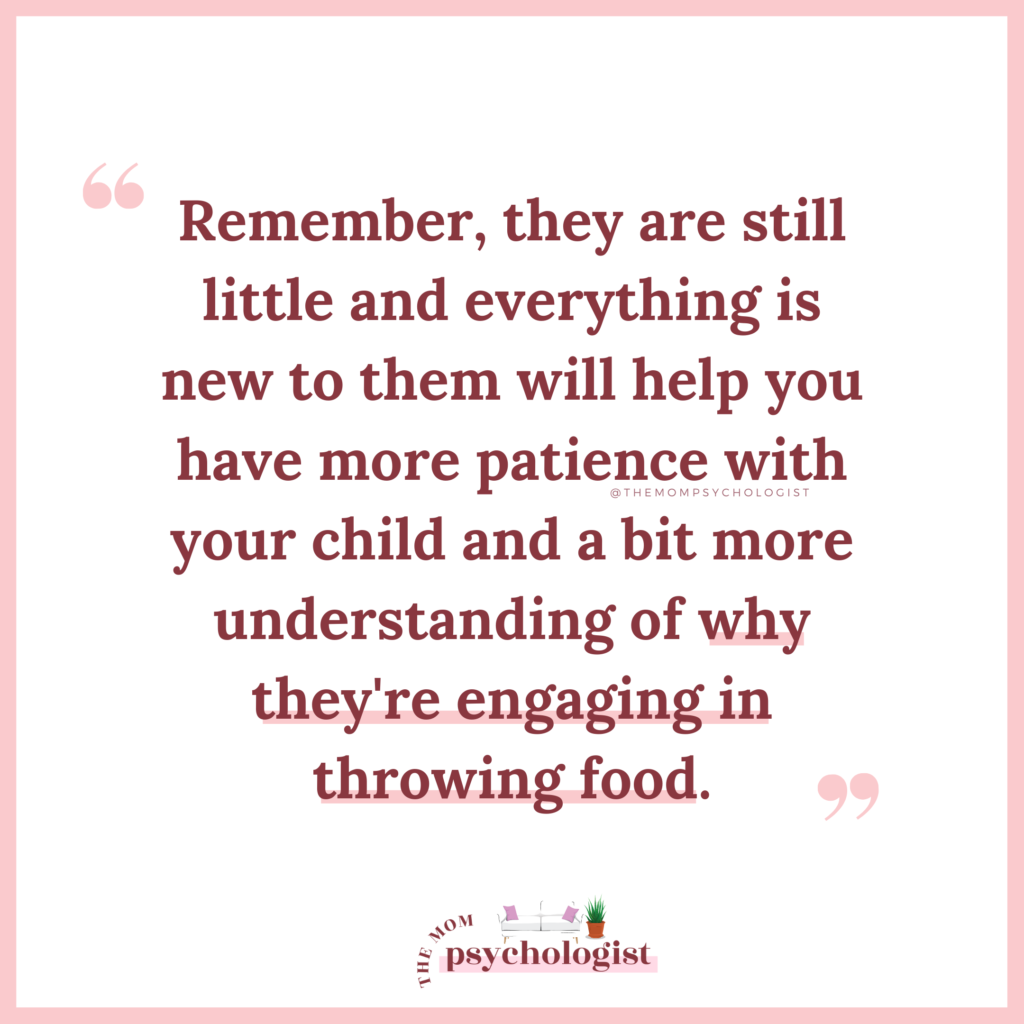
3. Put a plastic mat under your child’s highchair.
This will help make the clean-up a little easier, especially if they’re babies, and they can’t help you with the clean-up. This will hopefully also increase your patience as you go through your toddler or baby’s food-throwing phase.
4. Ditch the highchair tray and sit your child at the table.
By sitting your baby or toddler at the table, you help them kind of stay focused at mealtime by being right next to you and the rest of the family.
5. Try as best as you can to eat with your child.
Meals are a great opportunity to connect with your baby or toddler. I find that if you’re present with them through this process, it can cut back on behavioral issues like food throwing (or picky eating).
If you’re right there with your child, connecting and engaging with them, you’re also keeping them distracted from throwing food.
6. Put less food on your child’s tray.
Keep in mind that toddlers only need about a fourth of what we eat. Too much food on the plate can be overwhelming and contribute to your child tossing it over the side. So limit their portions and then give your child more food if they request it.
7. Give your child a “no thank you” bowl.
This can be a bowl, plate, or somewhere on their placemat where they can put the food they don’t want. This gives your child the power and control to put whatever they don’t want in a separate space to eliminate them from throwing it on the ground.
Now, if they are younger and you’re not sure if they understand the concept of the “no thank you” bowl, you can guide their hands to put the food in the bowl and then praise them for that. “Great. That’s where food that you don’t want goes. Good job! You can put it in too. No thank you.”
8. If you have a dog, put them away during meals.
To cut back on the added fun and reinforcement that comes when your dog cleans up their mess, make sure they are out of the eating area.
9. Cut back on pressuring your child to eat.
This one is important but also hard to do.
There can be a lot of fears associated with mealtime and your child getting the nutrition that they need. But as much as possible, it’s important to limit putting pressure on your toddler or baby.
Instead of focusing on the nutritional value of that one meal, I want you to zoom out and consider their nutrition throughout the entire week. This can help you keep it in perspective and hopefully minimize some of that anxiety.
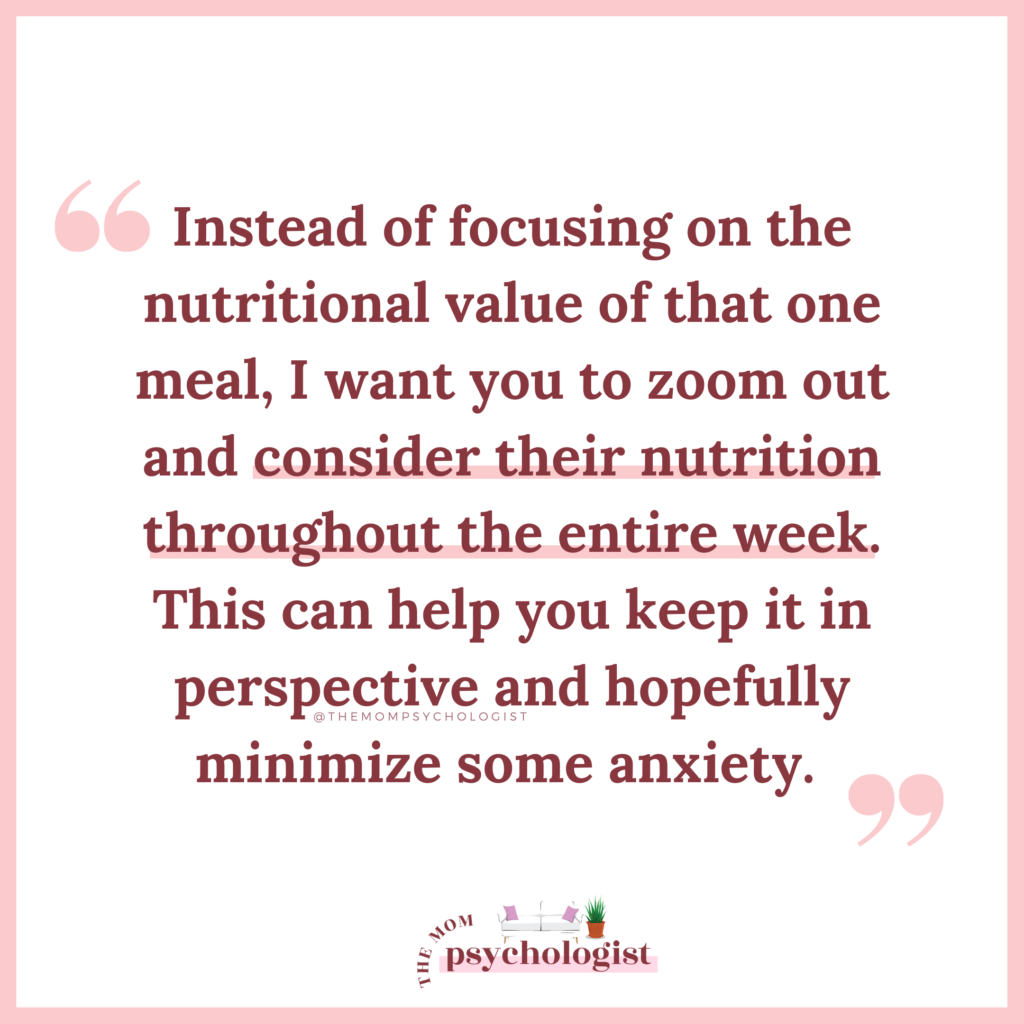
As the parent, you get to decide what your toddler or baby eats and when. Your child gets to decide how much they eat.
10. Set a schedule around meals and snacks to limit grazing.
Toddlers need refueling about every two hours. So try to get on a schedule for mealtimes and snacks. This will limit grazing.
Since you want to set yourself and your child up for success, make sure when they come to the dinner table, they’re hungry. This way, your toddler or baby is not ready to play (aka, throw food), they’re ready to eat.
Bonus Tip! Teach your baby sign language for better communication.
I am not an expert on sign language, but for the little ones, it can go a long way in helping them communicate important signs during meals. You can teach them “all done,” “more,” and “food.” Model it for them until they pick it up.
Keep in mind, if your toddler or baby is playing with their food or throwing food, they’re probably done. But sign language helps empower your child to use those communication skills to limit food throwing.
Let’s now get into what to do at the moment your child flings food across the floor.

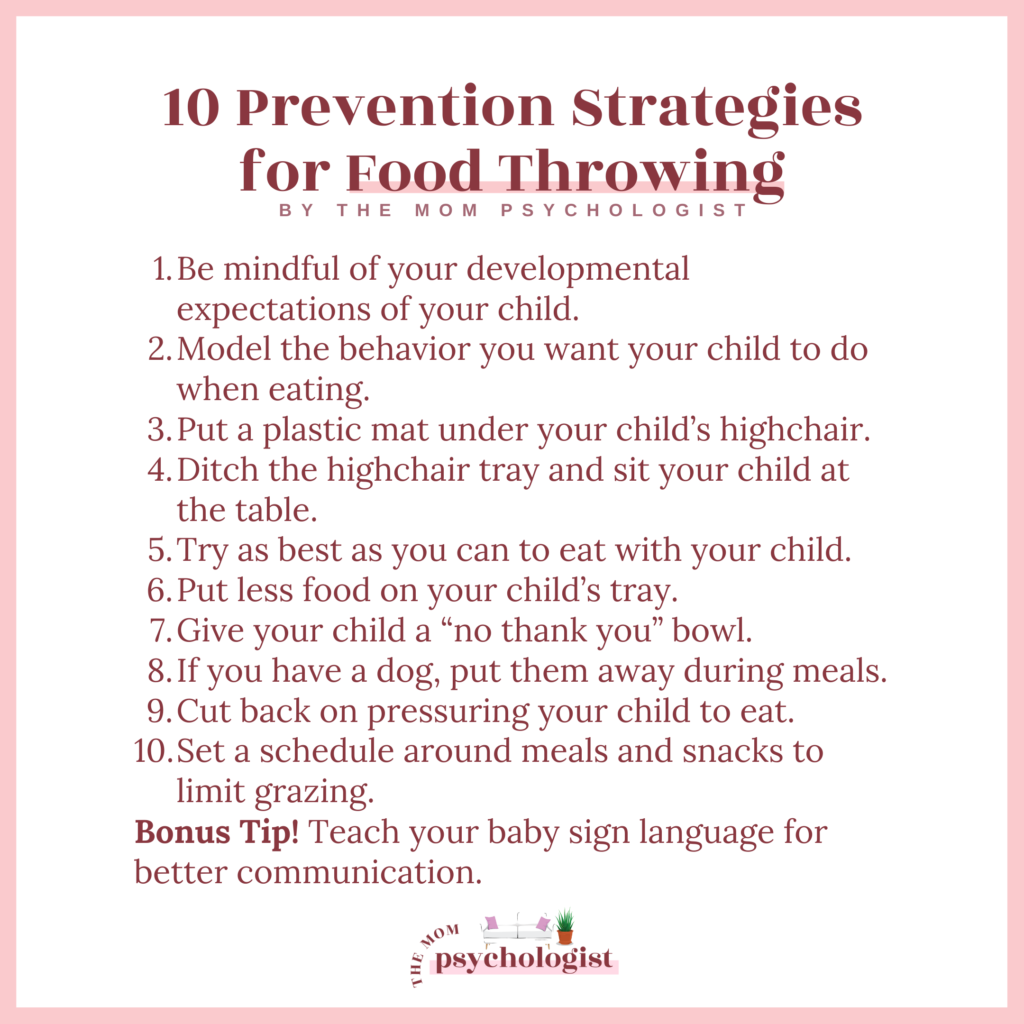
Step-by-Step Guide: What to Do When Your Baby or Toddler Throws Food
1. Set the expectations even before they sit down at the table.
This one applies more to toddlers around 2 years old and up.
When you set an expectation for your child’s behavior, you can say, “Okay, we’re about to have dinner. I expect you to keep the food on the table. If there’s something that you don’t like, put it in your ‘no thank you’ bowl.”
2. Use positive reinforcement.
One of the best ways to prevent food throwing – and behavioral issues in general – is to use positive reinforcement (like praise) when you notice your child eating their food or they’re keeping their food on the table.
You want to get intentional about noticing, describing, and praising that behavior because that is what you want more of and kids eat up positive reinforcement. “Good job for keeping the food on the table. Yay! You’re eating. I’m eating too!”
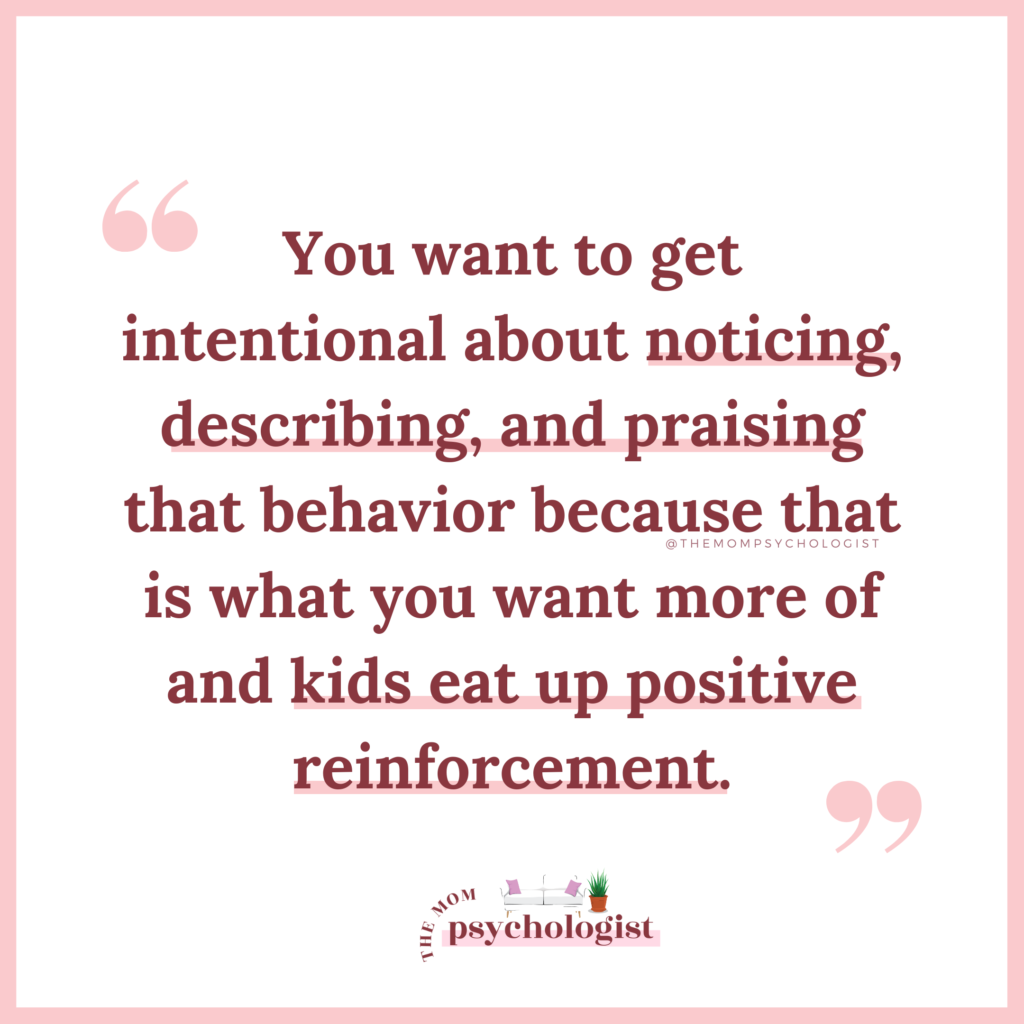
Keep mealtime fun and light to minimize that stress and minimize the likelihood of your toddler or child throwing food.
If you find they’re about to throw their food or they have thrown their food, you can say, “I can’t let you do that. Food needs to stay on the tray.” And you can guide their hands by putting the food back on the tray and then praising them for putting the food back on the tray. Even if they need help, you praise them as much as possible.
Give them a warning (e.g., “If you continue throwing or playing with your food, I’ll think you’re all done and meal time will be over”). If they continue to throw their food on the floor, end mealtime because food play is a sign your child is done. When this happens, you can calmly say, “All done! It’s play time!”
3. Ignore the food throwing – at first.
If you can, ignore the first one or two food throws. Because often, your child is looking for a reaction from you.
And commonly, this behavior can be minimized by simply ignoring it and not drawing any attention to it. Instead, give your attention to the other kids at the table or draw attention to what you’re eating. As soon as your child starts eating again or they stop throwing food, then draw your attention back to them. And give them lots of praise and attention.
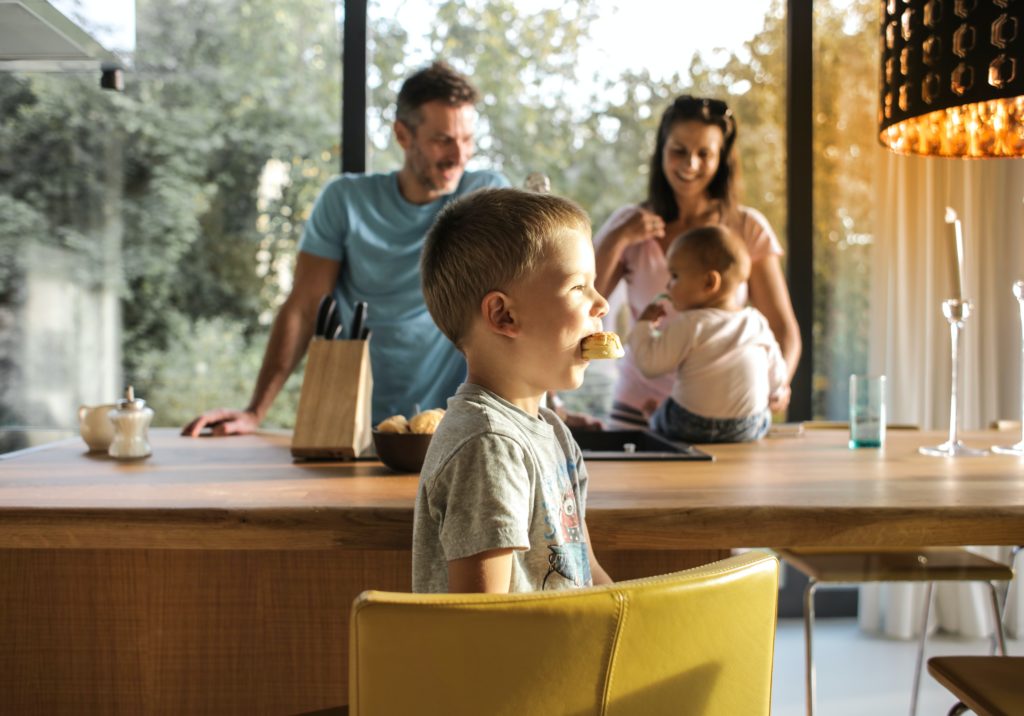
4. Give them a clear, simple warning about food throwing.
If your child continues to throw food and ignoring the behavior is not helping, then you want to give them a warning.
You can say, “Hey bud, if you continue to throw your food, I’m going to think you’re not hungry, and I’m going to end mealtime. So please eat your food or please keep the food on the table.”
You want to be specific about what exactly you need them to do.
5. Avoid responding like it’s an emergency.
Your reactions fascinate your child. And the more that you feed into the food throwing by responding as if this is an emergency and you’re all flustered and stressed out, the more you’re reinforcing the behavior.
So remind yourself that this is not an emergency. Everything’s going to be okay. Place down a plastic food mat – like mentioned in Prevention Tip #3 – if that will help ease your anxiety. But you want to come from a calm, confident place as much as possible.
6. End mealtime if your child continues to throw food.
When your child doesn’t stop throwing food, that’s your sign they’re done, and you can end mealtime. So you can say, “Okay, looks like you’re all done.”
Show your child you aren’t ruffled or frustrated. Ideally, you’ve taken your deep breaths and now are calmly and confidently ending mealtime.
If 20 minutes later your child comes to you and says they’re ready to eat, what do you do? I think it depends.
The first couple of times it happens, you can be more flexible in your approach. You could give them a snack or – ideally – give them what they were eating originally instead of making them something new.
But before you end mealtime, give them a concrete marker of when they can expect another meal or snack. Because eventually, you’ll want to phase out giving them any extra food if you have to end mealtime early. Your child will learn that when it’s time to eat, it’s time to eat. And when they don’t, the natural consequence is them feeling hungry.

7. Involve your child in the cleanup process.
You can say something like, “It’s time to clean up the food that went on the floor.” You can give them a napkin, give them a towel, a little broom, or whatever to help clean up.
And you want to praise that as much as possible. “Yay! Good job cleaning up. Thank you for your help. Now there’s no food on the floor. I appreciate that. Thank you, bud.”
If your child is on the younger side and struggling with clean-up, you’re going to want to break it into steps. Maybe the first step is to bring them to the area where the food is, then give them the napkin, and gently guide their hand to cleaning as you praise them. Remember, you’re not forcing it – it’s gentle in your approach.
Even if you have to guide them through cleanup, continue to praise them. Because this is something they’re still learning
This goes a long way because the natural consequence of making a mess should be that you clean it up. I always say, “It’s okay to make a mess, but we have to clean it up.”
Make it a positive process and not punitive.
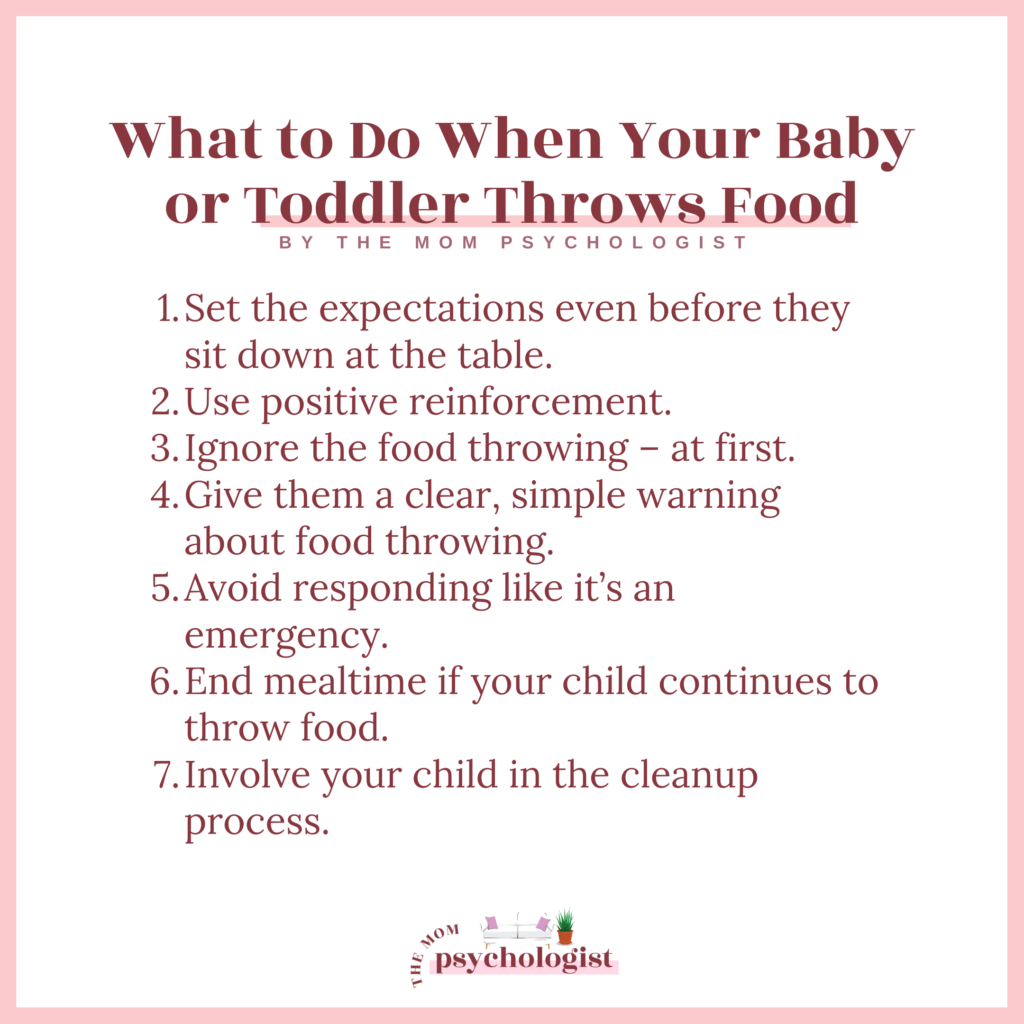
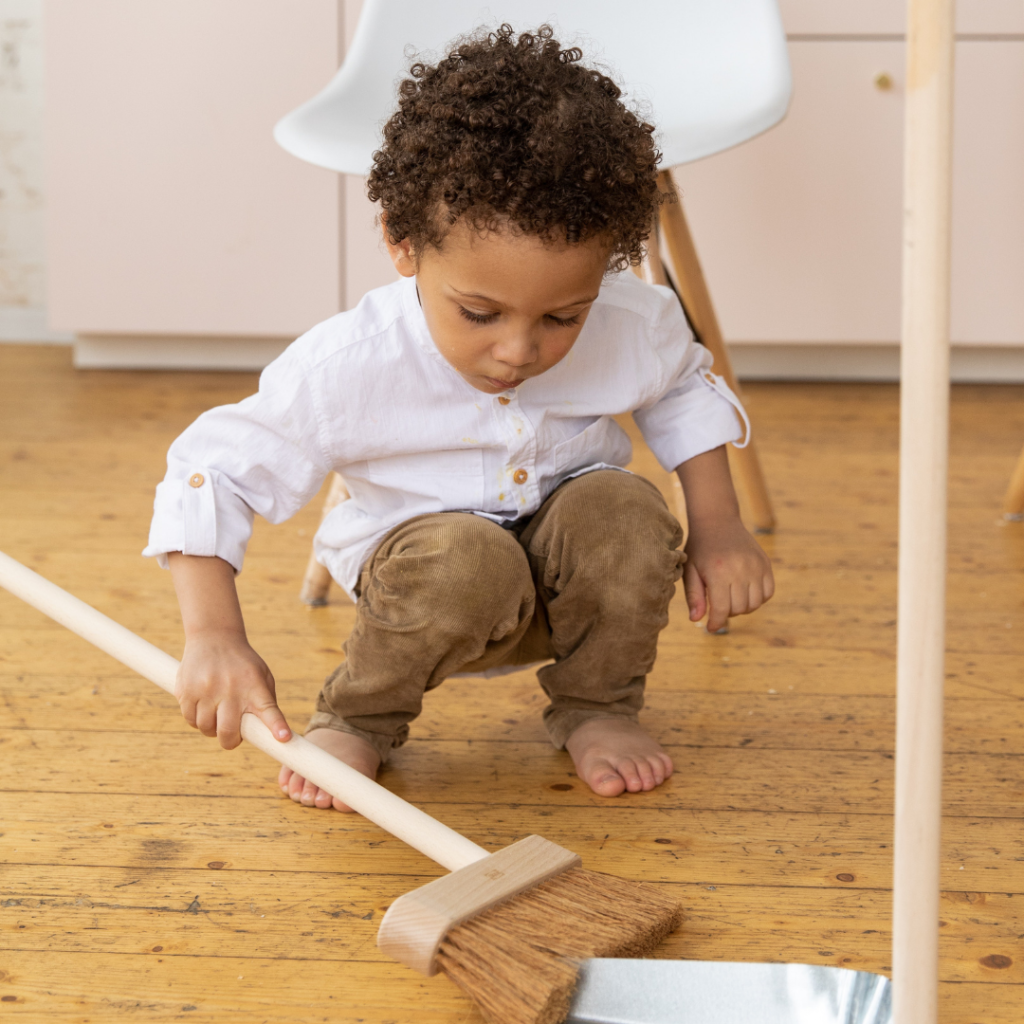
If you need a deeper understanding of how to get your child to listen and handle other misbehaviors, I have a free workshop, How to Get Your Kids to Listen Without Yelling, where we work through discipline and setting consequences with intention and respect.
You’ve got this,
Dr. Jazmine
Love this? Don’t lose it! Click below and save it to your Pinterest!
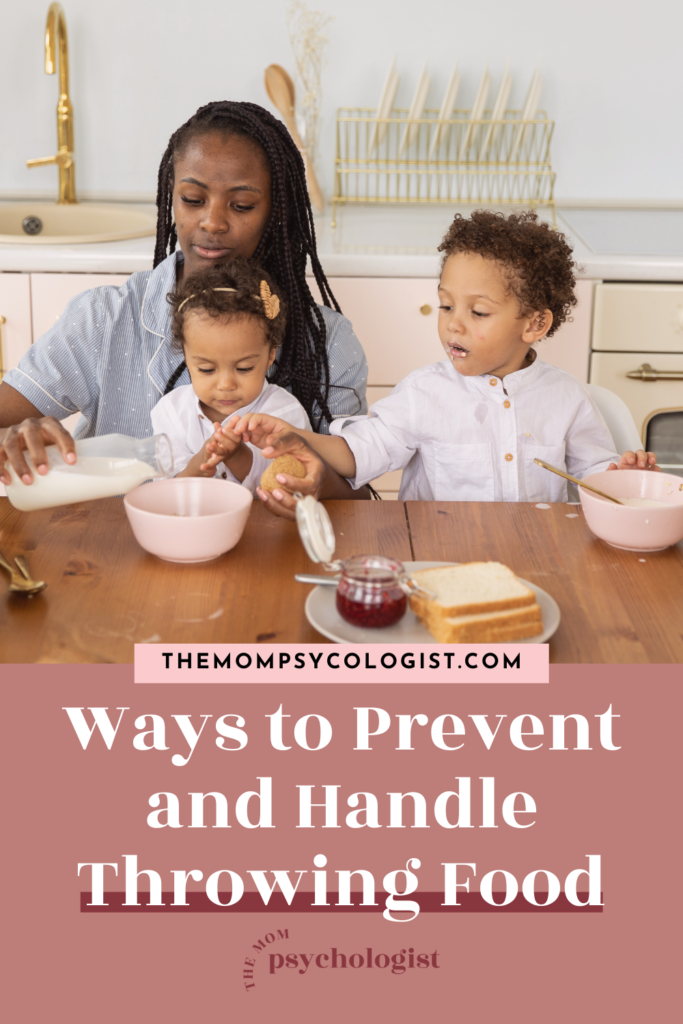
Leave a Reply Cancel reply
Copyright The Mom Psychologist® 2025
grab my free script pack!
explore
work with me
information
About
Blog
YouTube
Podcast
TMP University (Coaching)
Privacy Policy
Terms of Use
Product Disclaimer
Contact
TMP Times (Newsletter)
this is really helpful, i did some notes from this article so that i wont forget. im going to try this , also no thank you bowl was so new to me and im excited to try it
Thank you
This is totally unhelpful. My kid won’t eat in the first place and then looks me in the eye and throws her food on the floor. Not a single one of these suggestions works.